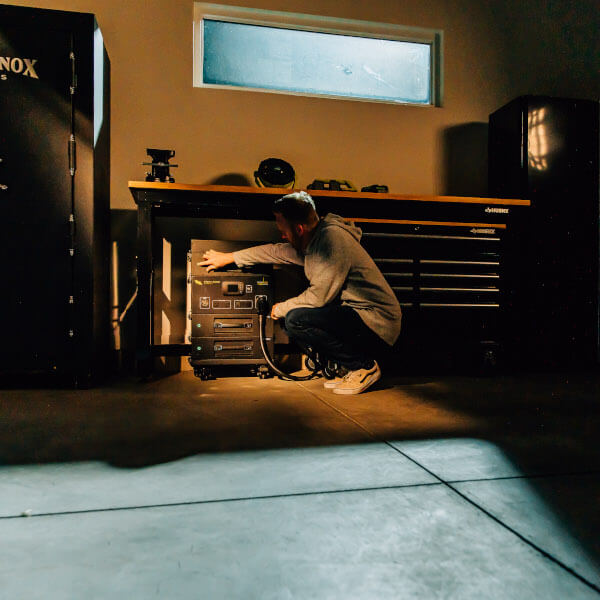While gas generators are effective for short-term power outages, their reliance on fuel makes them very limited, or simply useless, when it comes to long-term power requirements. This is why many people are turning to solar generators for more reliable emergency power. However, because many people don’t understand the fundamentals of solar backup systems (including solar generators), and how their various components should work together to provide a reliable system, consumers are being misled by false claims in solar generator marketing.
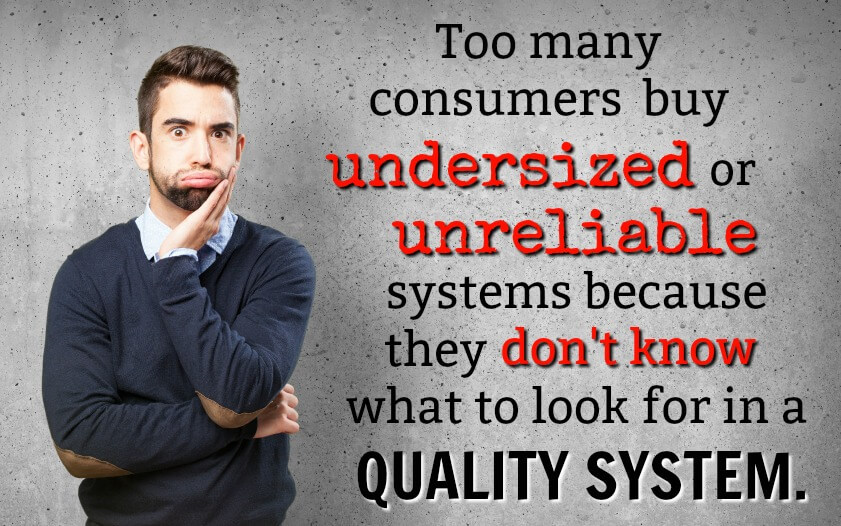
When choosing a solar generator for backup power in emergency situations, it’s critical that you know how to choose a reliable one- especially when you are depending on the unit for survival.
Making an informed buying decision about a particular unit comes down to understanding 5 critical components. In this post, I will hopefully give you a better understanding of each element, how is fits into the overall performance of your system, and what to watch out for in the plethora of systems and choices out in the solar generator market these days.
The inverter converts the DC power you get from your solar panels to usable AC power for your appliances. Ultimately, inverters are rated by the maximum watts you can pull at any one time from a solar generator. For example, a 1500 watt inverter lets you pull up to 1,500 watts in AC power. However, it should be noted that pulling the maximum watts from an inverter can deplete your batteries fairly quickly. You cannot expect to use the full maximum watts on a solar generator for very long.
The inverter is just one component of your solar generator, and is usually not upgradable. Meaning, this is the limit of your generator and you can’t increase it without buying a new, larger generator. Because of this, I recommend that you get a generator with an inverter big enough to run whatever you plan to run at any one given time, and consider appliances you may want to run in the future.
When comparing inverters, most people are focused on how many watts it has. While this is an important factor in a quality inverter, there are other aspects about your inverter that are just as critical to a reliable system such as:
Inverter efficiency can make or break your system, and many manufacturers do not advertise what this is. Basically, there are two types of efficiencies you need to look at. The first is maximum inverter efficiency. This is usually 90% or better for good inverters. And though this gives you an idea of how much power you loose, it is not really that useful, because your inverter will probably never get this efficiency (only at a very specific load). Non the less, you should increase the size of your batteries and solar by at least 10% for a 90% maximum efficiency inverter, or 20% for an 80% maximum efficiency inverter.
The more important efficiency rating is the idle power consumption. Whenever you have your generator turned on, it will consume power, whether you are using it or not. This is the idle power consumption. Many inverters will also have a power save mode which will turn the inverter on and off until it senses a load. This can be a huge power loss if you need to leave your generator on 24/7 to run something like a refrigerator. For example, I have seen solar generators that use up to 140 watts just in idle power consumption. This will use 140X24=3,360 watt-hours in 24 hours! This is more than most generators even store! You would need 700 watts of solar just to run the inverter! Good inverters will keep the idle power under 20 watts, and the power save under 10w.
Some solar generators come with cheap modified sine wave inverters. They can save some money, but cause all kinds of issues. The power grid, including all appliances we use, are designed to run off of pure sine wave power. Even though the efficiency on a modified sine wave inverter might say it’s just as good, or better than a pure sine wave inverter, the appliances it will run will be less efficient. For example, if you run a blender on pure sine power, it may take 300 watts of power, but on modified sine wave power it may take 500 watts. The other 200 watts is converted to heat, and will over heat your appliance and shorten its life. Also, there are some appliances that simply won’t run using modified sine wave; electric motors in older refrigerators, compressors, sensitive electronics, and medical equipment, will not start up using modified sine wave and could burn up if you leave them on. For something that you will need in an emergency, it just makes sense to have something you know will work with every appliance, and work efficiently.
The most important aspect of a solar generator’s actual usability is its battery storage capacity. Battery storage allows you to use the generator at night, in periods of limited sun, and when your energy needs exceed the amount of solar input coming in. There are two critical aspects you need to keep in mind to ensure you have a reliable battery storage capacity.
Batteries are rated in terms of amp hours (ah). For example, a 12-volt 100 ah battery. However, because most power applications (electronics, appliances, and tools) are measured by their wattage draw, estimating usage times becomes a bit problematic. Therefore, by converting amp hours to watt-hours, we get a more convenient battery rating. To calculate watt-hours from amp hours, multiply amps times volts. For example, the watt-hour rating of the above 12-volt 100 amp/hr battery is 1200 watt-hours(12*100).
Many people will say sizing your battery system will depend on the type of battery, because a led based battery can only be discharged 50% without shortening the life span, but lithium batteries can be discharged to 100%. This actually is not true. If you use a quality deep cycle AGM battery, it can be cycled 100% as well and maintain almost as much life as if you only discharged to 10% each cycle (life meaning total amp hours used*)
To size your system correctly, you need to know how much power your appliances use in a 24 hour period. Add that up, and then add 3-5 days on top of that to ensure you have power during cloudy or stormy days. For example, if you calculate you use 900 watt-hours each day, you would want a battery bank to be a minimum of 2,700 watt-hours. Of course, the more storage capacity, the more safety zone you have to work with. Depending on the type of battery, you can cycle your batteries to 100% if you need to without problems, especially if it is just occasionally when the weather is bad.
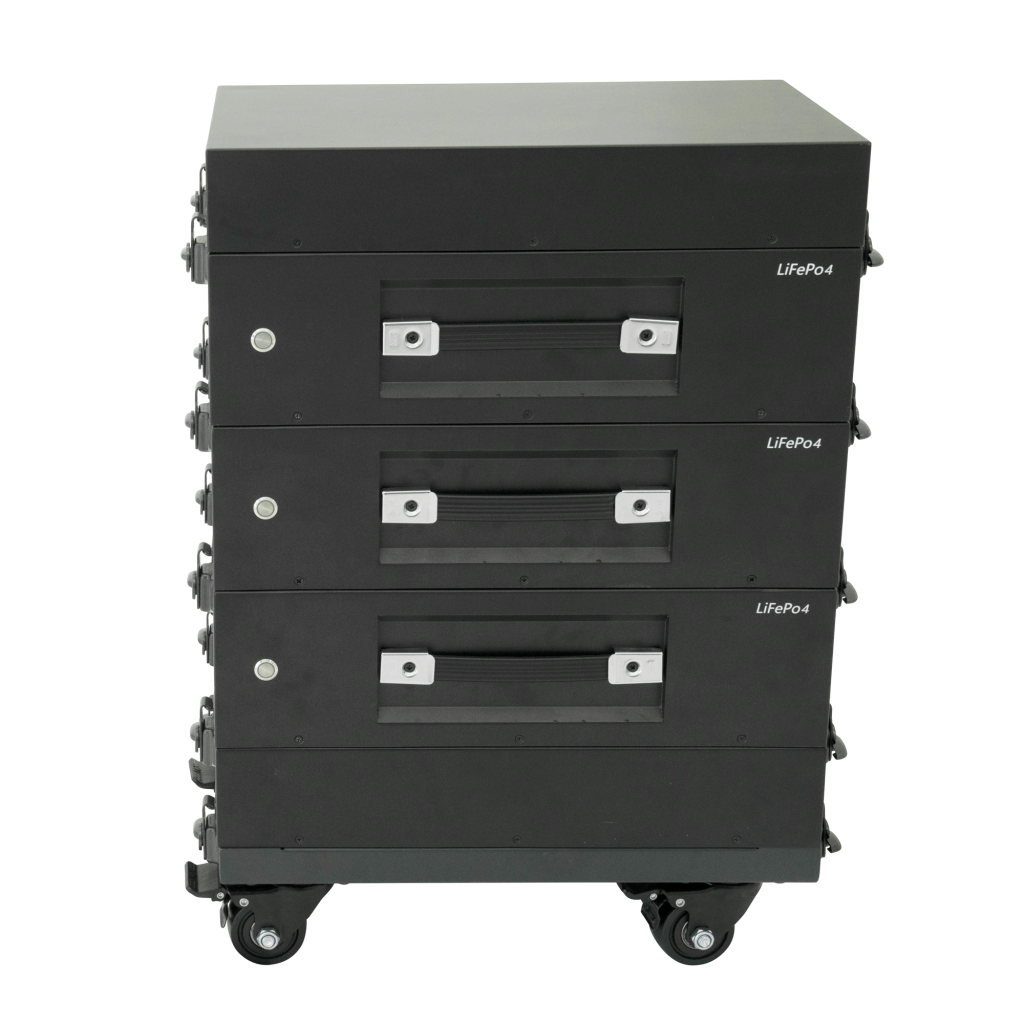
All batteries are not created equal. And although there are many different types of batteries, there is no one battery that is the best at everything. You might hear salesmen touting their’s are the best, but they’re only focusing on the strengths and not the weaknesses (they all have them). I could do a whole series just on batteries, but in this article, I’m only going to cover two, because they are the most common in solar generators: AGM’s and Lithium’s.
AGM’s are a great, all around battery and have many advantages. They are completely sealed so they require no maintenance. They work at almost any temperature, very efficient (compared to other led based batteries and nearly as efficient as lithiums), and good quality ones can handle deep 100% cycles, and can last 10 years or longer connected to a good battery maintainer. The negatives are that they are heavy (especially compared to lithium’s), their life cycles are usually less than lithium batteries, and they need to be fully charged (using a maintainer or connected to solar) to last long.
Lithium’s are light (the LiFeP04 are the heaviest, but still much lighter than led based), they have almost zero self discharge, and they don’t need to be fully charged to keep their long life. Most of them can handle more cycles than AGM , and can stay charged for years with no maintenance.
The cons are that they cannot be charged below 32 deg. F (want to know why, see here). Some types can catch on fire (LiFeP04 are much less likely), and they are more expensive than AGM’s, and they require a good battery management system.
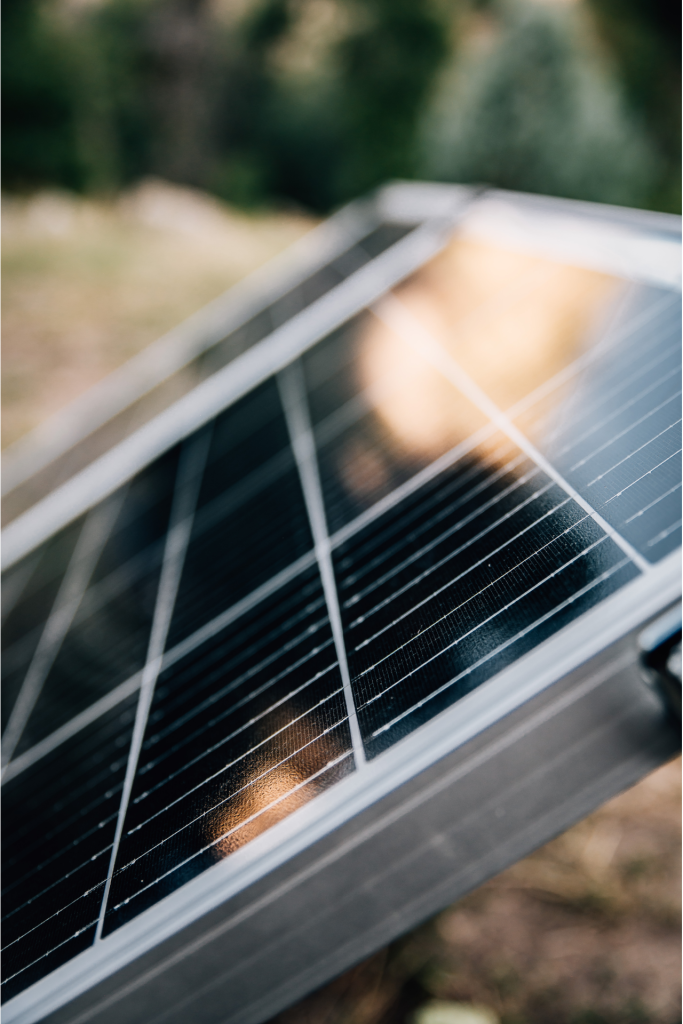
Solar PV input (solar panels) is what powers a solar generator. Having ample solar PV input allows for continuous solar generator usage during the day and low recharging times after night usage.
Solar panels are rated by their watt-generation capabilities. For example, a 100 watt PV panel generates 100 watts of power in full sun (peak sun-hours). It’s important, first of all, to note that “peak sun-hours” are not the same as “hours of daylight”. Most of the United States averages between 3 and 5 peak sun-hours, though many areas may experience less during the winter and more during the summer. Knowing the yearly and seasonal average peak sun-hours in your area is a helpful tool for calculating the correct amount of solar panels needed for a system.
In my area of southern Idaho, I get 5 hours of peak sun a day. So using this as our example, our 100 watt solar panel will produce on average 500 watt-hours of power a day. If we use the example of needing 900 watt-hours per day with our system, it becomes obvious that our 100 watt panel is not enough (since 100 watts will only put out 500 watt-hours per day). So to calculate how much solar we need, take 900 and divide by the number of peak hours of sun (5) and you get=180 watts. If you use this number, in theory, you will on average be generating the 900 watts of power you need. However, there are two problems with using 180 watts in this system. The first, is that there are inherently inefficiencies in your system. You’re not going to get the whole 900 watt-hours into your battery. Depending on the battery type, solar charge controller, etc. you will get between 50%-90% of that solar power into your battery for storage. Second, if you designed your battery size to last 5 days without sun, it will take 25 hours (5 days of sun) to charge from empty to full, and even longer to charge during seasons with decreased sun.
So what does all of this mean for you? It means that the amount of solar you need with your generator greatly depends on the efficiency of the other components. For any off-grid system, including solar generators, you will need 2-3 times the amount of solar you calculate, depending on the efficiency of the charge controller, batteries, and inverter. Or in this example 360-540 watts. If you have critical loads such as a refrigerator that you don’t want to be shut down, then you are probably going to want to go with the 5 days of battery, and 3X the Solar. It just gives more security.
Not very many people consider the charge controller when looking at solar generators. However, it can effect the efficiency of your solar panels by 40%, or even more on poorly designed systems. This section could actually be an entire article in itself, but I will try to keep it simple here.
Solar panels are rated at a specific rating, such as 100 watts. However, the panel will only produce 100 watts when two conditions are met. First, there must be full sun. And second, the voltage load on the panel must be at a specific voltage, given on the solar panel as Vmp (volts maximum power).
Now lets say we are going to charge a 12V AGM battery. This battery needs to be float charged to around 14V. Therefore, we need a solar panel that will go up to 14V. But if we design a solar panel to put out maximum power at 14V, it may work great at full sun, but when we don’t have full sun the voltage will drop, and it won’t charge our battery at all. Because of this, solar panels for 12V batteries are designed to be at about 18-21V. This way they will charge even during non peak hours (which is most of the time). However, when our solar panel is connected to a 12V battery it pulls the voltage down below the maximum power of the solar panel, and the solar panel may only be charging with 50watts.
The solution to this problem is what is called a Maximum Power Point Tracking (MPPT) charge controller. This type of charge controller will find the maximum power voltage of the panel, and keeps the panel’s voltage there, while converting that voltage down to the precise voltage the battery needs. By doing this you will increase the efficiency of your solar panels. The problem with this is that a good quality MPPT charge controller costs more money than regular charge controllers, and therefore many solar generator manufacturers don’t use them.
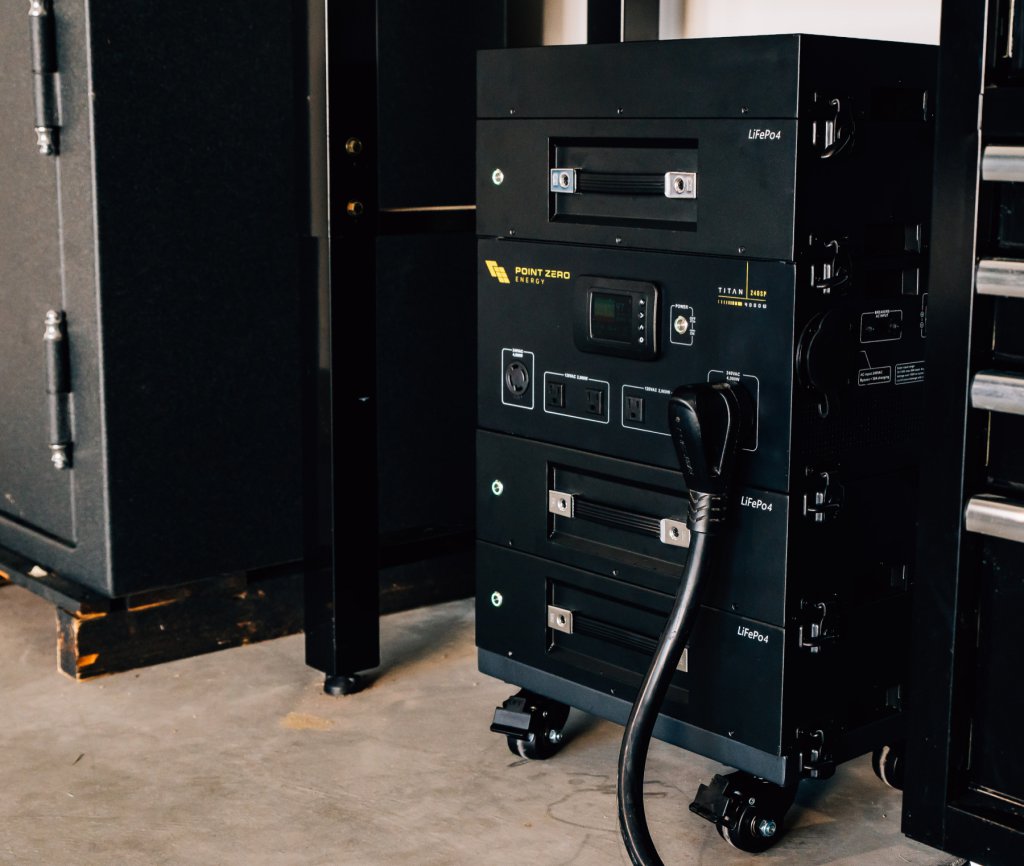
The ability to expand your system is very important in a solar generator, especially if you want your system for long term backup power. You many not have the money right now to get the system you really want, or you may later decide you would like to run more things on your solar generator. Either way, it is important to be able to upgrade your generator when you need to. However, there are some limitations to how much, or what you can actually upgrade.
Solar
Generally speaking, how much solar you can add to your system is based on the charge controller. There will be a maximum watts the charge controller can handle as well as a maximum voltage the charge controller can take, and both are important. You will not be able to expand your solar panels more than the maximum charging capacity of the charge controller, and a wider range of voltage input will make it much easier to configure new panels added to the system. You will also see a limit to how much solar power you can add to your system by how large your battery is. If the generator does not allow for battery expansion it will not make much sense to expand your solar panels much.
Batteries
Many solar generators are not designed to allow for the batteries to be expanded. If there is no way to plug in external batteries, then you are limited to what the generator comes with. Also if you get a generator with lithium batteries, the only way to expand the batteries would be by getting the batteries from the manufacturer of the generator. This is due to the many different types of lithium batteries, and the way they are managed. With lithium batteries you need to add the exact type size and brand of battery, and your battery management system must be able to work with the expansion. Therefore, it’s not common to expand lithium batteries in generators.
Inverter
The inverter generally cannot be expanded. So you must make sure the generator you purchase has a large enough inverter to handle all your future power needs. If you buy a Generator with a 1000 watt inverter, you will never be able to run anything over 1000w even for a few minutes.
The most important thing to remember is buying a reliable system should be about facts you can back with numbers, not hyped up sales pitches making false claims. Ask about these 5 components and compare the numbers. Because in the end, the numbers don’t lie.
Expandability:
Inverter – The inverter is not something that can be easily upgraded, so if the inverter size is not at least 3,000 watts we don’t consider it expandable.
Charge controller- The charge controller will set the limit to how much solar you can add to your system. If the charge controller cannot handle at least 1,000 watts, we did not mark it as expandable.
Input Range– This is the Input Voltage of the Charge controller. If you have a large range of voltage input, then it will make it much easier to add more solar panels to your system. We don’t consider it a large range unless it can handle over 50V and have a MPPT charge controller.
Battery– Unless the system is designed to add external batteries, there will be very little you can upgrade.
Efficiency:
Low idle – This is the power the generator uses just to power the inverter. This power usage is the most important efficiency measurment of of your inverter, as your inverter will wast this much power all the time it is on, and will really effect run times.
MPPT – If the sytem has a MPPT charge controller it will increase the efficiency of your solar panels by up to 40%. Without a MPPT charge controller you will need more solar power to produce the same results as one without.
Pure sine wave – You will want a generator with a pure sine wave inverter, otherwise appliances will use more power, and wear out quicker.
True Deep Cycle – Many batteries are not true deep cycle, and only allow you to discharge them to 50%. This essentially reduces your battery capacity by half. To pass this test, the Generator needs to be capable of a 100% depth of discharge (DOD) when needed.
Usefullness:
Portable panels – Some solar generators come with large roof mount solar panels. These can save money, but are hard to move, and you will need to build or buy a stand to hold them up.
Charge Time – This is the time it takes to recharge your batteries from empty to full. If you have some cloudy weather, it can drain your batteries, and when you get a sunny day, you want to be able to quickly charge them back up. for this chart, we set this level at 10 hours. This time will be determined by solar size, charge controller type, and battery size.
Run time – If you don’t have don’t have a large enough battery, or your generator is low efficiency, your generator will become useless during cloudy days. We consider it a good run time if it will run a fridge for 48 hours without sun.

